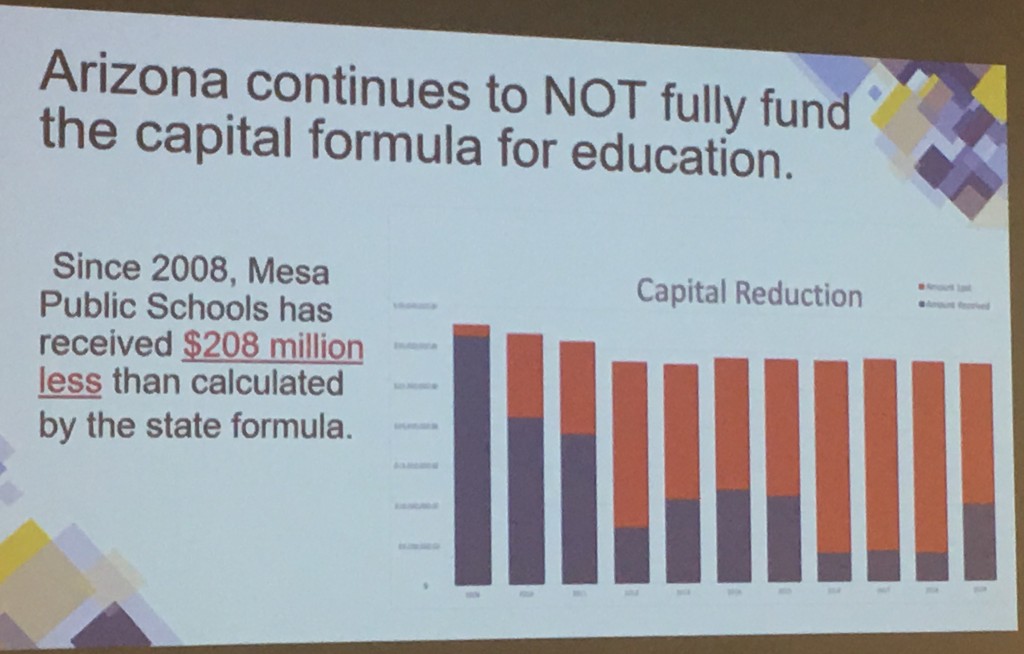Taking off out of Sky Harbor a couple of weeks ago on an early morning flight, I was struck by the clarity of the morning, and the beauty of the valley. Normally, I do not think of Phoenix as being very picturesque, especially having moved here from Tucson, where the desert is just a little bit more green, mountainous and wild. But on this morning, the valley stretched expectantly east to the Superstitions, and the rising sun reflected off of miles of the Salt River and interconnected canals. The freeways moved like slow rivers themselves, and the green oblongs of school football fields measured out the neighborhoods.
Reflecting on the busy Friday beginning below, I realized something that is not a new idea, the importance of infrastructure. I reflected on recent news of hurricane Florence, on the tens of thousands of people who were evacuated, and I looked at our freeways below. How important these arteries are in both daily life, and also in times of crisis! I thought about the 60-plus homes that had surprisingly exploded into gas fires in Massachusetts a couple of weeks prior, and where those 8,600 people went when their homes were threatened or destroyed by the mysterious gas supply problem. I thought about Puerto Rico where, no matter who gets the blame, the recent report that 2,975 people died in the wake of Hurricane Maria points to a complete failure of infrastructure: power, transportation, water, and communications.
One can find many articles written about public schools as an important part of the infrastructure of our communities. Interestingly, many of the articles I came across (in my admittedly quick search) are written about developing countries, in journals and publications for organizations involved in analyzing or promoting globalization. The articles I noticed that related to public schools in the U.S. focus on two things. On the one hand, many authors see schools as a sort of a metaphorical “infrastructure” for a community– important places that develop young people into successful community members and that connect families and neighborhoods around education, health and other important issues. On the other hand, many articles point out the need to address crumbling buildings, water quality issues, aging data systems, or transportation.
In fact, public schools are both metaphorical and physical infrastructure. In addition to strengthening communities through our educational purpose, school campuses are important resources in times of actual physical disaster.
I suppose I did realize this a few years back when I developed a natural disaster community response simulation lesson using the example of the 2002 Rodeo-Chediski fire in Arizona (a project I did for the Arizona Geographic Alliance). I used a disaster simulation lesson published by the Koshland Science Museum as my template, but focused on the northern Arizona communities of Heber-Overgaard, Show Low, Snowflake and Whiteriver. As I researched the fire (later dwarfed by the Wallow fire), I found that in these communities, the public high schools had key roles to play as shelters, communication hubs, and staging areas for rescuers and community assistance. Because of this, I included a football field, school gymnasium and busses in the cards that represented local government resources during the simulation.
Too many districts rely on their strapped communities to pass bonds and overrides to raise money. The bonds fund capital expenditures: Buildings, busses, etc. One reason so many districts ask for communities to approve bond sales is that the state capital expenditures for public schools have been slashed since 2008. This image shows the impact in my district alone:
In recent memory, citizens of our state can remember leaning on local public school districts in times of real crisis. In more than one way, it is crucial that we build a strong public school system using a reliable stream of revenue. Countless memes on social media point out that expanding private school vouchers to anyone who wants one is like saying to people that if you don’t like your local park, you should be able to take back your tax dollars and use them to build your own park. Or your local city pool. What would happen if, because of budget cuts, we had to stop managing the Salt River, maintaining canals, or repairing freeways? What if people insisted on pulling their tax dollars from these projects to try to fund their own neighborhood canals, personal roads across town, etc.?
Meanwhile, charter schools, already run using our state tax revenue, have much less regulation, transparency and accountability than traditional public school districts, and they pop up (and then close down) all over the place, allowing those who run them to profit off tax money and then close up shop. I can’t help but think that if we were to carry these privatization efforts to their ultimate conclusion, we would end up with smaller schools scattered throughout the community in smaller spaces with fewer facilities, vs. a more stable and versatile set of public resources. I am all for some of our larger schools being smaller, but I believe that public districts provide the strongest infrastructure for our communities.
Imagine being in a rural community facing wildfire. How useful would a dozen shop-front charter schools be vs. your typical public high school campus with its wide-open gathering spaces, sheltering buildings, and bus barn? It’s hard to think of what would replace these types of physical resources. Of course the educational mission to serve all students is primary, but responsible (and responsive) use of public money for public purposes is also important.The many uses of our public school campuses are too important to ignore in our debate over school funding.










